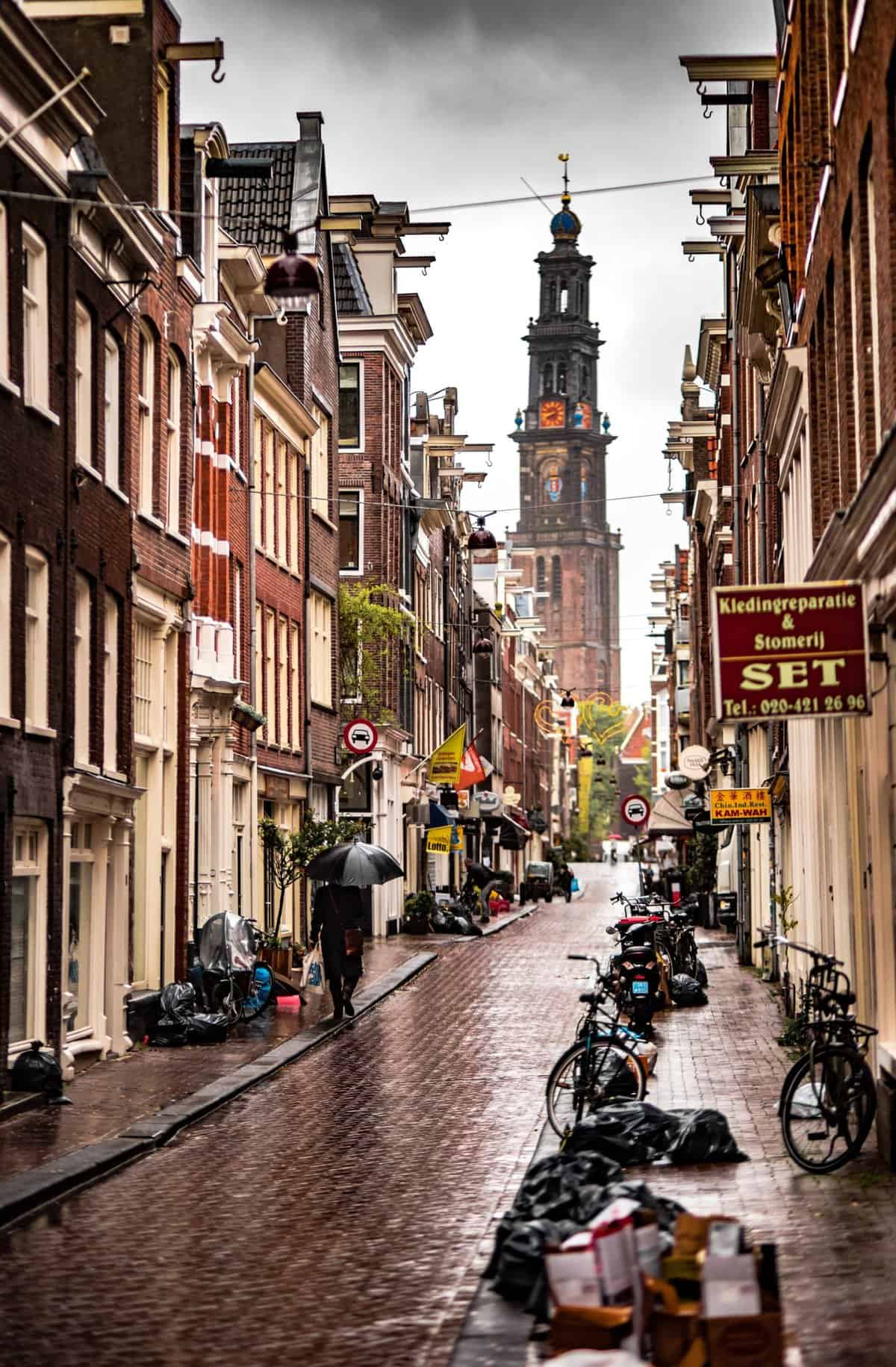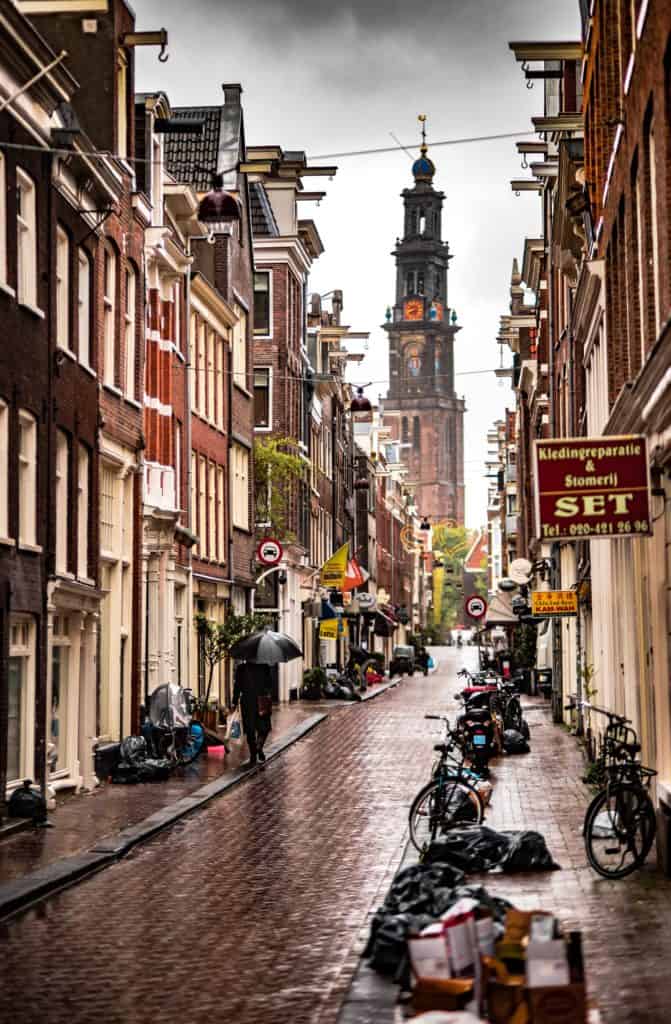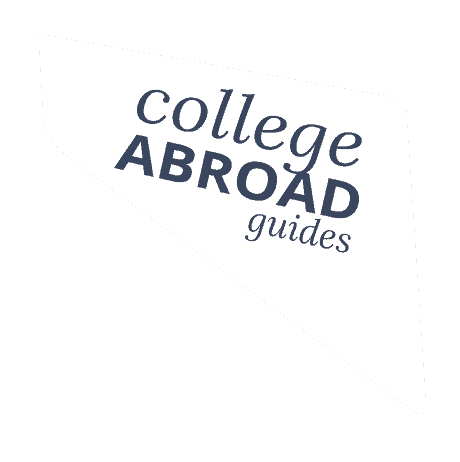Amsterdam University College

- Originally published
- Last updated on July 24th, 2023 at 12:16 am
Table of Contents
Amsterdam University College is the largest, best-known university college in the Netherlands. It’s at the top of a lot of students’ lists. we’re finding out why.
No spoilers here. There are three main reasons students love AUC.
- It’s the biggest city in the Netherlands. It’s known for its liberal political attitude and gorgeous canals, vibrant nightlife, and safety. Many international students told us they wanted to live in Amsterdam to avoid prejudice. They felt smaller cities would be less accepting of people of color., LGBTQIA+ people, and neurodivergent folks.
- Amsterdam University College is also coveted for its close collegiate atmosphere. It’s a residential three-year program where students must live and study with their peers for the entire program. In the first year, this can feel like a welcoming, easy entry to college life. Students all take the same required classes and live together in the same building, just five minutes from classrooms. Trouble making friends? They’re ready-made at AUC.
- Hard sciences with labs are also a tough focus in many other liberal arts programs. However, Amsterdam is known for its rigorous science focus. Science-minded students that might never pick a university college otherwise find AUC a good choice.

Is it Hard to Get into Amsterdam University College?
Yes! Amsterdam University College has a very selective acceptance rate of roughly 20% of applicants. Humanities students will find their math scores need to be high (600 SAT). The math requirements are even higher for social science and science students. They’ll need APs in statistics (social sciences), calculus AB (science), or to meet IB requirements.
Social science students, for example, will find themselves swept into first-year statistics requirements. It speaks to AUC’s emphasis on reading and conducting research in the quantitative social sciences. There’s an overall vibe at AUC that graduating students will go on to academic careers.
Is Amsterdam University College a Good University?
Easy answer: yes.
Hard answer: What happens when the world’s 66th Times ranked University of Amsterdam teams up with #116th Vrije Universiteit Amsterdam to produce an academically rigorous, residential liberal arts love child?
Likely something beyond both of its parents’ dreams.
However, university colleges rarely get ranked. Their professors, often committed to teaching, are a small faculty whose research does not always drive world rankings.
The bonus for undergraduate students is a top-notch faculty with time to respond to students. They also engage students in their research and help them flourish in order to become top-notch academics themselves. It also means access to parent-university resources in multiple fields.
Parent university, the University of Amsterdam, ranks among the best in Arts and humanities, cardiology, clinical medicine, and cell biology.
Campus Amsterdam
The Science Park campus lies about 20 minutes by bike from central Amsterdam in Amsterdam Oost, an east-side neighborhood known for its international flavor. Here, there are plenty of global food options and independent shopping nearby.
The residences are three buildings in the same complex on Carolina MacGillavrylaan, the main thoroughfare in Science Park.
Amsterdam University College itself is housed in a groovy wood-ceilinged barn-like complex a 5-minute walk from the dorm. The area also has buildings from the larger University of Amsterdam (Universiteit van Amsterdam, or UvA).
The University of Amsterdam is the largest university in the Netherlands, home to roughly 30,000 students. That makes it large enough to be divided across four campuses throughout the city. Science Park is separated from the humanities in the University Quarter, which is also where the main library is located. You’ll find it a 22-minute bike ride away, in the heart of the central city.
AUC, however, isn’t a child of UvA alone. It was founded as a joint project between UvA and Vrije Universiteit Amsterdam, which has facilities on the south side of Amsterdam’s inner ring. Students have access to both, so get out your bike.
AUC Accommodations
Students are guaranteed and required to live in on-campus housing for all three years. They’re among other first-year students in a single mid-century dormitory building that lacks inspiration. It makes up for it in cohesion.
Four-person apartments have a shared living room and kitchen. They also have two shared bedrooms upstairs, making for a more social, but also homey option.
Doubles offer more privacy. They come with their own bedrooms. The ubiquitous singles offer small kitchens, private bathrooms, and the comfort of nearby friends.
Oh, but your room will come unfurnished, so you’ll have to figure out how to buy furnishings from previous residents or bike your furniture from a nearby shop. Not only that, but many students choose to upgrade floors and cabinetry, and you can often buy them from students moving out from the previous year.
One of our favorite culture shocks is that in the residence halls, you’ll also find a lenient policy on cats, dogs, and rabbits in the dorms at AUC.
Try to score a cat to keep you company in your single. After your first year, you can switch rooms or room types (for example, if you’re happy in a single room but yours is near the street and quite loud, or if you want to switch from a single to a double).
“I knew it was going to be leftist and open-minded, but I didn’t expect it was going to be fun.”
Student housing is close to the AUC academic buildings. In this way, students say the campus is a bubble, and their worlds don’t always extend beyond the 5-minute walk between sites.
To help out, the student association plans social activities and boasts multiple subcommittees for almost everyone’s interest area, from a peer-reviewed academic journal to cooking, trivia, meditation, trips, and sports.
Need to escape the bubble? Many students meet other Amsterdam students on social media or dating apps, or take bike rides alone to get off the campus. You can swim in the canals, take a recreational class like pottery, or check out countless exhibitions and bars in Amsterdam.
Out in the City Near AUC
Liberal arts students find their campus in Amsterdam Oost (East), just inside “de ring,” a highway delineating inner Amsterdam from the rural hinterland. The campus is on the outskirts of Amsterdam – about a 20-minute bike ride from city center, in a neighborhood transitioning from industrial to artsy.
It’s already hit the “mural” stage of gentrification.
Quieter than the downtown core, Oost has its share of bars, galleries, plant stores, an independent cinema run by students, and parks. Amsterpark Oost boasts wide-open green spaces and festivals in the summer.
The Dappermarkt serves typical street offerings from herring to produce in a tourist-free atmosphere. The typical adjective associated with the Oost neighborhood is “real.”
“AUC was definitely the right choice. I love my life here both related and unrelated to uni work.”
Cultural Hangouts in Amsterdam
Amsterdam has extensive cultural and museum offerings that other small towns in the Netherlands won’t. Because there is so much to do, you can purchase the lookout card (go to the top floor of Amsterdam’s tallest building!) the Museumkaart (enter about every museum in Amsterdam for €50 per year, including the Rijksmuseum, its adjoining library, and the nearby modern art museum, Stedelijk), and a Cineville card (for about €15 a month, attend every art cinema).
“AUC is in Amsterdam, which is the capital. That was important to me because I like to live in vibrant cities. I didn’t apply to any other university colleges, and I really only properly looked at Amsterdam.”
The city archives are free and offer budding historians access to a cache of photographs and documents about Amsterdam’s place in history. Cat museum? You can’t get that anywhere else. Some cats are Rembrandt’s creations. Some rub against your legs while you explore.
Clubbers in Amsterdam will find they’re able to indulge every musical taste. AIR, an international space with multiple bars and dance floors, hosts DJs from all over the world. NYX, a club true to its gay roots, is known for wigs and ballroom parties. Students also party in the inner city church, Paradiso, with its fabulous balconies and soaring architecture.
Amsterdam University College Program
Amsterdam University College is a three-year bachelor’s program in liberal arts and sciences, with students selecting one area on which to concentrate (social sciences, sciences, or humanities). They’ll also narrow their focus within that discipline to a major area (or combine two or more for a custom degree specialization).
“In other universities the degrees were more ‘closed,’ and I was interested in many different fields, so when I saw that I could combine so many different and cool courses I fell in love.”
There are a few universal requirements, and then requirements for each major. For instance, humanities students will take more language courses, whereas science students are required to take calculus.
Amsterdam University College students are high achievers, so it’s easy to get lost in the program and find yourself among students who are committed to making high grades in rigorous classes.
There’s an emphasis here on multiple assessments rather than a single end-of-term test or paper.
What that means is that students can feel overwhelmed by the constant stream of assessments and can miss out on putting time into enjoyable assignments or readings in other classes.
It’s a high-impact program and you’ll have to prioritize. On the positive side, students find it isn’t too hard to pass a class because of the multiple assessments.
The academic year is divided into two semesters with an “intensive” 4-week course at the tail end of each. This is something many students do not like; they feel the semester is getting too long and that they are dragging themselves to the finish line, trying to complete “just one more course” during time stolen from semester breaks, in order to make the program fit into its three years.
Academic Specialties and Class Structure
There are three majors here: sciences, social sciences, and humanities, with more course offerings than smaller university colleges but the same emphasis on breadth, self-motivated student initiative, and combining fields to make a custom-fit major appropriate for graduate studies.
However, Amsterdam does center its studies around six themes that make it particularly appealing to natural science students: (1) Energy, Climate, and Sustainability; (2) Life, Evolution, Universe; (3) Health and Well-being; (4) Information, Communication, Cognition; (5) Social Systems; and (6) Cities and Cultures.
The academic core is more rigorous and prescribed than many other university colleges, with seven generalized classes on academic writing, logic, global identity, and research.
Two or three languages are also required, based on major. Language courses require two levels of a single language, and these can be taken during the intensive (a month-long semester add-on when students immerse themselves in a single course).
Science majors must take calculus and statistics.
Social science majors will take a social sciences research and statistics course.
Humanities majors instead undertake their third language.
“I liked the fact that I had the freedom to chose whichever courses I wanted, and a lot of them sounded interesting.”
Taking on an Academic Minor
There are multiple tracks that function as minors, with students required to take five courses in a track, or seven courses from two tracks, to add depth and focus to their study plan. The program ends with a capstone paper as well as with students completing an internship or community project.
It can be a little confusing, and one student even says that prospective students “should check the graduation requirements to understand what exactly they will have to do in the program” so that they know what they’re getting themselves into.
“I started searching, and seeing all it had to offer and within an hour I knew that I had to go there. It was mainly because of the degree, in other universities the degrees were more ‘closed,’ and I was interested in many different fields, so when I saw that I could combine so many different and cool courses I fell in love.“
Like other university colleges, an advisor, called a tutor, guides students through developing their own curriculum and assuring they meet the requirements to graduate.
Life in Class
Classes are small, maxing out at 25 students, but demand on students is high in this honors college environment. Pressure is reduced with a diversity of assignments, so students must get a 55% to pass each class – but grades won’t ride on a single final exam. Instead, students will sit multiple exams, prepare presentations, write a paper, complete a research project, etc.
One current Dutch student remarks that people complain the program is challenging and the work is excessive for 180 EC (credits).
The school’s semester schedule is another unique aspect of the program that underscores its intensity. Students take four courses for the first 16 weeks of each semester, and then an add-on “intensive” 4 weeks allows for a fifth course. This stretches the academic year significantly longer than many other academic calendars.
Social Societies and Activities
AUC provides a large roster of social activities. As a large university college, AUC’s student association also has ballooned to 29 committees.
It’s a good place to find the widest breadth of student committees, from music appreciation, trips, entrepreneurship, interactive media, philanthropy, yearbook, meditation, and even inexplicable clubs like solace (“offer[ing] comfort in sorrow, misfortune, or distress – introducing you to Amsterdam’s nightlife”).
Sounds like a nice distraction.
Amsterdam University College Students
Amsterdam University students are a larger cohort than most other university colleges in the Netherlands. Students know of Amsterdam and pay more attention to the program. In this way, AUC attracts a diverse group of applicants. The college boasts 60+ countries, though most international students come from within the EU.
Learn More about the Netherlands
Get an education on how to go to college in the Netherlands, from costs to all the ways the system differs from the U.S. Don’t know which UC is right for you? Figure it out here.
Related Posts

Jessica Share
Jessica is the writer, Ph.D., and mom-of-an-abroad-student-in-the-UK at the helm of College Abroad Guides. When she's not asking college students where the coolest place to hang out in their city is, she's figuring out how she can make $60 imported Greek oregano potato chips and £50 British bacon potato chips appear on her doorstep for the cost of a local bag of Lay's.





